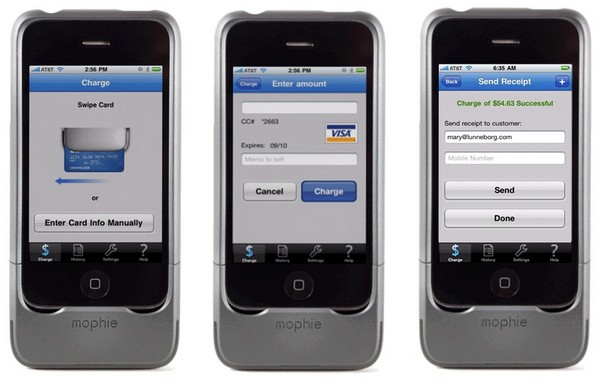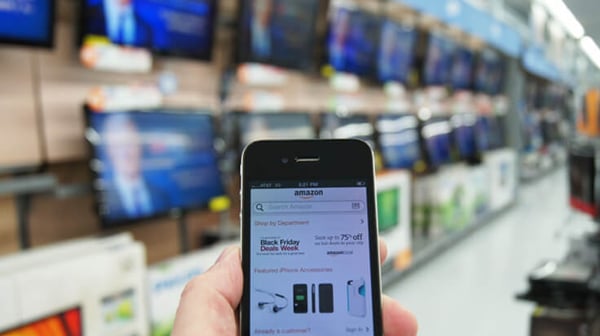
See why top ecommerce brands use Miva’s no-code platform to run
multiple stores, manage massive catalogs, and grow their revenue.
The lines between brick and mortar stores and ecommerce are quickly becoming blurred. M commerce can appear in many different forms. When you pay for your Starbucks with your Square app, you are participating in m commerce.
When you go to a retail store and search for similar products online for a better deal or reviews, you are taking part in m commerce. Retailers have starting using iPads and smartphones to take payments in store and are cashing in their registers for tablets.
We are still in the early stages of experimentation, as retailers online and offline are exploring the different opportunities that m commerce brings with it. There are payment systems popping up left and right as companies are realizing the potential of mobile payment systems. However, most of them are having a hard time gaining traction, other than Square.

Of course, the companies that we’d likely expect to be first entrants are already on board. Apple has created Passbook, PayPal has created a mobile wallet app, and then there is Checkout by Amazon Mobile. Even retailers are getting in on the action. Retail chains, including Target, Walmart, and BestBuy, have teamed up to launch Mobile Commerce Exchange, a cross-merchant mobile payment platform.

Google has Google Wallet, which enables consumers to make purchases by tapping their smartphones. Cell phone carriers are moving into the payments arena, as we speak. Basically, the battle is on, and it will likely continue for the next several years until only a few rising stars emerge among the masses.

Ecommerce and m commerce are very similar, as you would probably expect. So, rather than being separate experiences, they are coming together to become a joint commerce effort as m commerce becomes more prominent. Payments will consolidate as more shopping apps, like Amazon mobile, come into the battle arena. Just as m commerce and e-commerce are conjoining, in the same way in-store and online shopping are becoming one, whether retailers like it or not.
Another big change that m commerce brings to the traditional shopping experience is showrooming. Consumers are shopping at brick and mortar stores and researching the features, prices, competitors, etc. from their phones. Retailers will see more and more consumers reaching into their pockets and buying products from competitors on their smartphones while shopping in their physical store. Showrooming actually presents new business opportunities for ecommerce stores, but it is definitely worrisome for traditional retailers.

Walmart is probably the only retailer that is not apprehensive since they already account for 8% of U.S. retail sales. The retailer’s Vice President for Mobile & Digital Strategy said that Walmart plans to use mobile apps in the future to steer buyers to self-service.
Showrooming presents positive opportunities for retailers too, though, as Galen Gruman from InfoWorld points out. When the product is not in-stock at a location, Gruman suggests retailers can use kiosks or mobile apps to keep the sale from bouncing. The inevitable “come back next week when we have it in stock” or “try one of our other stores” can quickly be translated into an instant sale via m commerce. Retailers can learn how to work with m commerce rather than against it by viewing it as an opportunity rather than a road block.
There is a strong interest in targeting ads on smartphones and other mobile spamming ideas. With rich customer profiles and big data analysis, some marketers believe they can manipulate the buying habits of consumers.
“The industry is trying to shove down consumers’ throats notions from the 1970s like coupons and promotions, whether you like it or not, because 0.1 percent of you might respond,” said Patrick Gauthier, head of emerging services at PayPal, during a panel at M-Commerce World.
With the low cost of mobile marketing, as no printing or collateral is really required, Gruman worries that it will be even more appealing and more prevalent in the future. For example, dynamic mobile coupons have already been shown to perform 10x over paper.
Social media can powerfully predict consumer intent. What most consumers will feel as invasive, most companies will see as opportunity. It is important, as a retailer, to be wary of crossing the line into invasive territory while m commerce experimentation continues.

It is obvious that the future of m commerce is bright, as long as business owners keep themselves informed on where it is going and take advantage of all that it has to offer. With some positives and some negatives, the next few years will be all about working out the kinks and figuring out mobile payment system will prevail in the long run. However, while we stand back and let the competitors battle it out, retailers can use this time to embrace this powerful shopping tool.
Information was derived from InfoWorld.
Back to topNo worries, download the PDF version now and enjoy your reading later...
Download PDF Miva
Miva
Miva offers a flexible and adaptable ecommerce platform that evolves with businesses and allows them to drive sales, maximize average order value, cut overhead costs, and increase revenue. Miva has been helping businesses realize their ecommerce potential for over 20 years and empowering retail, wholesale, and direct-to-consumer sellers across all industries to transform their business through ecommerce.
Visit Website